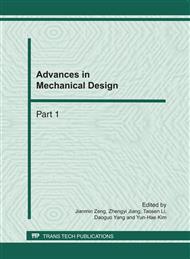p.988
p.995
p.999
p.1005
p.1010
p.1014
p.1020
p.1024
p.1031
Study on Dynamics of the Bionic Mechanical Coupled Diaphragms for Sound Source Localization
Abstract:
Sound source localization is always of great value in many engineering applications. In recent years, studies on orientation mechanisms of the auditory systems and research of bionic structures of subminiature creatures, especially of the parasitoid fly Ormia Ochracea which has a remarkable ability to detect the direction of the incident sound stimulus despite of its tiny body size, may provide preferable solutions for the miniaturization of acoustic localization structure. In this paper, the bionic acoustic sensing device are set up and taken as the research object to find feasible orientation mechanisms, and the dynamics of the bionic mechanical coupled diaphragms are analyzed. These works provide the basis for the manufacture of experimental acoustic sensing device. In the last part of this paper, experiments on bionic acoustic sensing device are conducted after the test system has been established. The measured data and the analyses based on the measured data demonstrate that the modeling methods and theoretical study in this paper are correct.
Info:
Periodical:
Pages:
1010-1013
Citation:
Online since:
February 2011
Authors:
Price:
Сopyright:
© 2011 Trans Tech Publications Ltd. All Rights Reserved
Share:
Citation:


